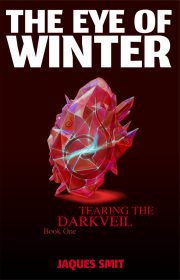Hunting for an Agent (with Sample Synopsis)
Written by John E. Stith
I managed to get my first agent before I sold my first novel. Having an agent generally doesn’t affect the odds of sale, but it does hasten the process of finding out, so if your first novel is complete and unsold, you might consider this approach.
This article contains the text of the cover letter I sent to an agent, the letter that resulted in representation for my first novel. Following the query letter is the sales synopsis I sent with the novel, a synopsis that helped result in a first novel sale (about one year later). The synopsis is patterned after the one Dean Koontz used in Writing Popular Fiction. Comments not actually part of the submission are shown in <this manner>. The title of the novel, as submitted, was Time Waves. The title Ace wanted to use for publication was the title I had used in earlier drafts: Scapescope. The only information “sanitized” is my address/phone and the agent’s name/info. Scapescope, a kind of humorous take on 1984, was published by Ace in November 1984.
THE QUERY LETTER
John E. Stith
my street address
City, State Zip
10 October 1982
Phone: (xyz) 123-4567
(Collect OK)
Agent
Agency name
street address
New York, NY ZIP
Dear Mx. ______:
I have completed a science fiction novel, entitled Time Waves, and I would like to know if you might be interested in representing me.
<KEY POINT: the novel is complete; if you’re trying to sell your first novel as a partial, you’ll need more luck than I’ve had.>
The novel is approximately 62,000 words long. It opens in 2147 with a protagonist who learns, with the aid of a device that yields limited information about the future, that he is soon to be listed on the government’s known political criminal list. The second half of the novel is set in the NORAD Cheyenne Mountain Complex, one of my former places of employment.
If there is any more information you require (e.g. a detailed outline, sample chapters, or the entire manuscript), I will be happy to provide it promptly.
I have sold about ten science fiction stories to markets including Amazing, Fantastic, and Spectrum, but Time Waves is my first novel. I’m a member of Science Fiction Writers of America.
<KEY POINT: I believe having professional fiction credits significantly raises the odds of getting a positive response.>
If you’re reluctant to take me on, could you please tell me whether or not you might be interested in representing me if I come to you with a publisher who is ready to purchase the novel?
For your convenience, an SASE is enclosed. Thank you for your time and attention.
Sincerely,
Signed: John E. Stith
THE SALES SYNOPSIS
<header for pages _after_ page 1>
Stith Time Waves Synopsis Page #
John E. Stith
my street address
City, State Zip
Phone: (xyz) 123-4567
<text from here on was double-spaced>
Background
The date is 2147 A.D. The location is Earth. Comparatively superficial improvements have been made in several aspects of the human condition, including energy resources and the population growth rate. Population density is critically high. With the introduction of the scapescope in 2130, fundamental attitudes have begun to change.
The scapescope is a device that provides glimpses of the future. Since so many divergent futures exist, images farther into the future than a few seconds are blurred, so a policy of summarizing significant events in a predictable format enables people to learn about future events by viewing the information displayed in the form of alphanumeric text on a screen. Events in the immediate future can be viewed with high clarity, but the observer is limited to viewing six months in the future. The clarity of the image is greatest when an event is probable and soon. Events that are less probable, or nearer to the six-month limit, are hazy or not visible at all.
The primary impact of the device is that the human race is becoming nearsighted. Projects with significant chances for failure are not undertaken. Mankind is losing the ability to gain knowledge and maturity via occasional wrong turns and serendipity.
Characters
The protagonist is Mike Cavantalo, a photonics engineer and futurist, working for the government. At the time the novel starts, he has not yet questioned the long-term effects of scapescope.
He meets Lisa Ryan, a member of a secret group working outside the government on a solution to the problems created by scapescope.
Theme
The overall theme of the novel is that one makes one’s own future; predestination is a myth. Moreover, the frequently aggrandized ability to foresee the future may actually make the human race lazy and less capable of dealing with the future.
Tone
The tone of the book is one of underlying humor and hopefulness. It is intended to be a fast-paced adventure, illustrating our ability to make mistakes and then take the required action to correct them, learning in the process.
Synopsis
The story opens with Mike Cavantalo receiving an unusually severe reprimand from his boss, for apparently failing to do a thorough job on a recent report. (Cavantalo’s sketchy first draft found its way into distribution as a final copy.) After the tirade, Cavantalo retreats to his office wondering, “if it’s starting now.” In a flashback, he recalls a recent scene, one in which his former lover moved out because, via scapescope, she had seen Cavantalo’s name on a list of political criminals, two months in the future. Cavantalo himself is quite disturbed since he is aware of no quality in his personality or plans that might explain why he is seemingly relegated to such a fate.
Cavantalo resolves to cheat fate and find out what happened to cause his reprimand. He is disturbed to find out that his access to information is no longer as wide as it previously was. He is subjected to technologically caused harassment, such as being trapped in an elevator, and experiencing wide temperature fluctuations in his apartment. He feels that someone is probably manipulating him, but, before he finds out any significant details, he is subjected to another reprimand for missing a deadline. (This time his article text simply vanished, as if he had never even started the project.) He is demoted.
After more investigation, he is demoted again because of an article critical of the government, apparently authored by him. Then, due to apparent computer error, he is almost given an unnecessary operation. He is thoroughly convinced by now that he is being deliberately manipulated, but he still does not know by whom.
Soon, Cavantalo is fired for supposedly sending a threatening communication to his boss, but he has had time to trace the sabotage efforts to another government office. He bluffs his way into the office and in a confrontation is able to obtain an admission from the agent in charge. The purpose of the manipulation was to put him into a position in which he could easily be coerced into doing a large favor for the government.
They reveal that Cavantalo’s sister is a member of a clandestine group currently occupying the long-deserted NORAD Cheyenne Mountain Complex, buried deep in the Colorado Rocky Mountains. The group apparently includes one of the original developers of scapescope and is working on a project that is felt to be a threat to the government. (The primary speculation is that the group is working on a scapescope improvement that will allow them to see farther into the future than the government can.)
The government wants Cavantalo to infiltrate the group and stop the effort. He refuses. One last elevator ride, during which one of Cavantalo’s close friends is threatened, is enough to change his intentions. He agrees to cooperate but privately resolves to take no action.
Cavantalo contacts his sister and is able to enter the mountain complex but soon finds that, despite his tarnished public image, he is not to be trusted with the nature of the project. He meets one of his sister’s friends, Lisa Ryan, and is attracted to her.
Before he can gain the confidence of the group members, he is placed in a precarious situation. He is approached by a man who claims to be an infiltrator and needs Cavantalo’s help to smuggle a modified scapescope prototype out of the complex. Caught between wanting to protect the group’s work and not wanting the government to know that he might not cooperate, Cavantalo steals the prototype but, unknown to the reader and the infiltrator, damages it so that it will not be of any use to the government. He turns the secretly damaged prototype over to the infiltrator who is then disclosed to be a now-loyal group member.
Ostracized, but allowed to stay in the complex, Cavantalo keeps quiet until an apparently real infiltrator anonymously contacts him. Cavantalo talks to Lisa and convinces her that he had not betrayed the group but that no one else should know since his position will allow him to keep tabs on any other government people. Cavantalo admits to Lisa that he is torn between helping the group and not wanting a longer scapescope viewing time, when she tells him that the real purpose of the group is to make scapescope totally unusable by creating time waves, a disturbance in the energy field necessary for its operation.
While the group is making final preparations for operating their disrupter, Cavantalo is approached by the infiltrator who has planted a device that will kill everyone still in the complex in a few hours. Cavantalo breaks away, and, after a chase and fight, tries to warn the people in the complex, but they don’t believe him. He makes his way into the testing area where Lisa convinces the others to listen to Cavantalo.
<Note: You must tell the editor how the book ends, at least in general terms>
They find the device and deactivate it. Final testing of the scapescope disrupter is finished and it is turned on. It works, but the disruption caused by the device has a secondary effect; it enables them to see brief glimpses of periods that they guess to be one to two centuries in the future. Thus, although their efforts have created a potential long-term curiosity or problem, they have eliminated the short-term predicament.
End of Synopsis
Good luck to those first novelists in the audience. And if you’re not sure what agents to approach, look at the listings of recent sales in Locus or Science Fiction Chronicle. If you’re already in SFWA thanks to some short-fiction sales, check the agent listing at the back of the annual directory. It’s the very best source around for finding out who represents writers who’ve been around long enough to have fired their agents if they weren’t happy.
END
This article is Copyright. Publishing Note: On-line publishing rights to this article (which first appeared in SPECULATIONS, January 1995) have been provided free to SFWA by the author, John E. Stith, for an indefinite period.


